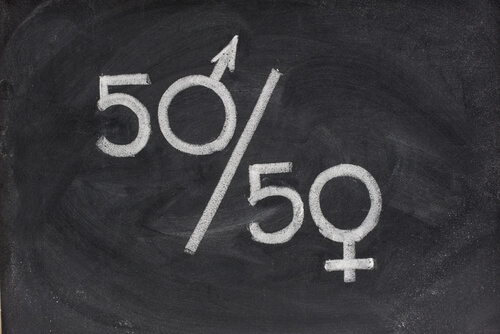 There was a recent study conducted by Payscale that illustrates the harsh truth behind the gender wage gap. Women earn 25.6% less than men when all men are compared to all women. This is only a dismal 74 cents on the dollar. Ladies, we are worth a lot more than this. While this study emphasizes how complicated the wage gap is, it is not impossible to solve if we continue to work together.
There was a recent study conducted by Payscale that illustrates the harsh truth behind the gender wage gap. Women earn 25.6% less than men when all men are compared to all women. This is only a dismal 74 cents on the dollar. Ladies, we are worth a lot more than this. While this study emphasizes how complicated the wage gap is, it is not impossible to solve if we continue to work together.
“The Five”
This study discovered five factors that impact the gender wage gap:
- Job Type: This category is inclusive of jobs as well as industries with an increased level of pay that are oftentimes dominated by men.
- Job Level: It may or may not surprise some that the wage gap increases as you climb the corporate ladder. This factor was exemplified in another recent study conducted by Leanin.org and McKinsey & Company.
- Compensable Features: Payscale controlled for factors such as education, experience, hours worked, and location in order to best identify pay inequality between men and women who were similarly qualified.
- Marriage and Family: Married working mothers have the highest pay gap in comparison to married working fathers despite the fact that more men state that they frequently prioritize family over work.
- Unconscious Bias: This factor may be the harshest of all because it incorporates the theory that behavior contributes to gender pay inequality. Inequality is oftentimes the result of beliefs that we do not even know that we hold. This expresses precisely how our attitudes impact our behavior and shift society. It is important that all of us become aware of our beliefs and attitudes in order to challenge and correct discriminatory behaviors and practices and advocate for social change.
Mapping Employment by Gender
The data from this study is alarming because it clearly illustrates distinct differences between the earnings capacity among men and women. In my home state of Connecticut, the most commonly held job for men is mechanical engineering. The median pay is $73,000. Social work is the most customary position for women, which generates an average pay of $48,100. There is a dramatic difference in median pay between the two positions and genders. In Florida, construction management is the most frequently held occupation for men in which the median pay is $67,700. The most commonplace role for women in Florida is administrative service management, which yields a median pay of $44,300.
The story is obvious between the two states. There is plenty of earnings potential for men in male-dominated industries while women are left behind. Women do not earn much even in industries dominated by their own gender. This is troubling because our earnings capacity is deemed to be much less than that of our male counterparts. Even in 2015 we are still seeing a deep divide between genders, professions, and wages.
Solutions: Empowering Women at Work
There is not one simple solution to this issue. Legislation alone cannot fix it. We must continue to work together, learn, and explore new approaches. Organizations can be proactive. Women can take the following steps to help themselves and the movement:
- Know your market value: Learn how much you should be earning to find out if you are being underpaid. Do not rely on your employer to have a transparent pay process.
- Negotiate: Ladies, if you are being underpaid, ask for what you’re worth and negotiate! By doing so, it makes it easier for other women to do the same.
- #SquadGoals: It can be empowering to find supportive male and female colleagues.
- Find a mentor or become one: Men with professional mentors earn more than women do. Finding an executive who will advocate for you is beneficial as well.
- Educate yourself: Learn more about the hidden biases that affect your behavior and those around you.
- Speak your mind: Tell your employer what matters to you, whether it involves parental leave, bias training, or leadership development.
Equal pay is not an impossible task if we continue to work together and break down barriers. Through achieving equality, we can make gains in the areas of employment, poverty, economic growth, and influence our social norms.



